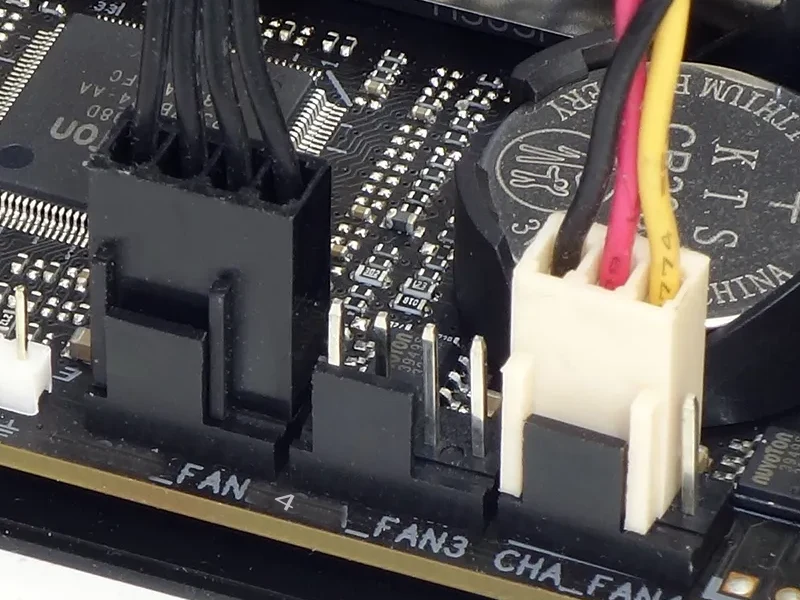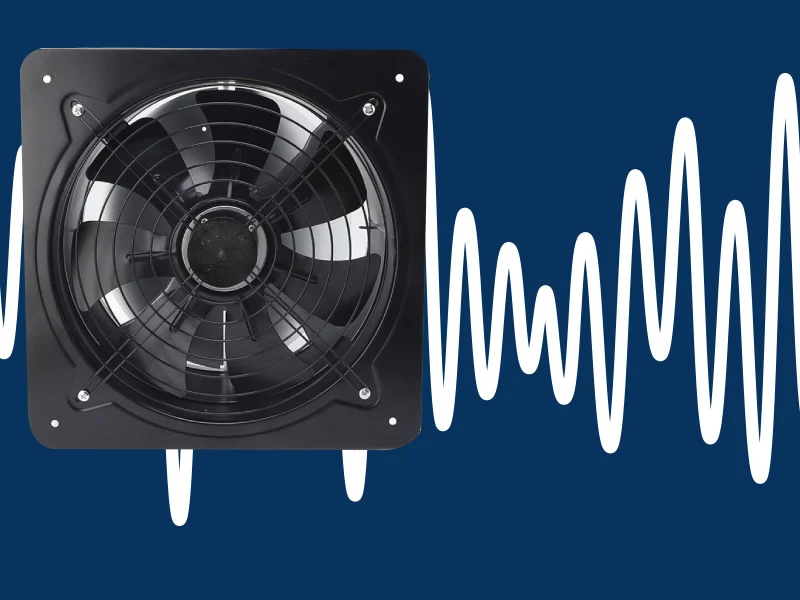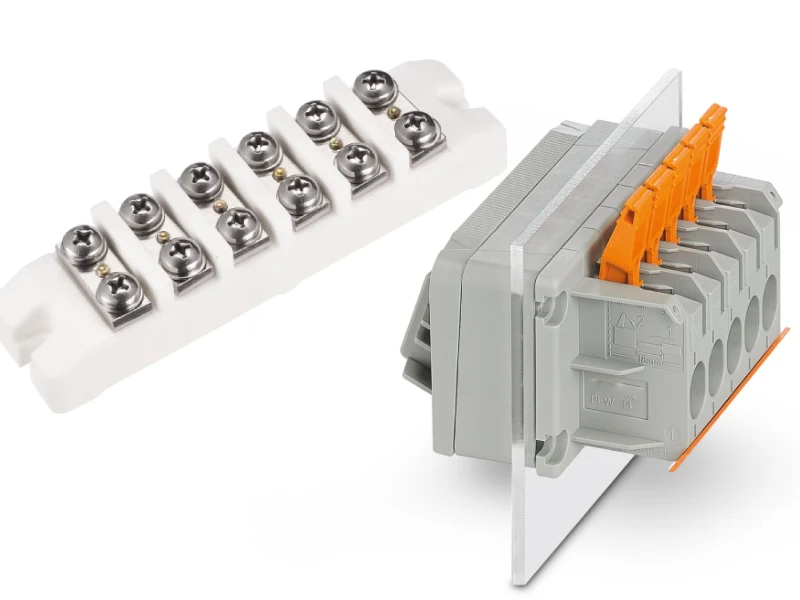When you face the Axial vs Radial Fan decision, the main difference comes down to how each fan moves air and handles pressure. Axial fans push air straight through, making them perfect for situations where you want a lot of airflow with less resistance. Radial fans, also known as centrifugal fans, handle higher pressure and work better in tough industrial spaces. Here’s a quick look at how the market uses these fans:
| Fan Type | Market Share (%) | Key Applications |
|---|---|---|
| Centrifugal | 63.8 | Heavy-duty industrial applications |
| Axial | N/A | Tunnel ventilation, HVAC, cooling towers |
You might choose an axial fan for high airflow and low noise, while a radial fan fits best when you need strong pressure for more demanding environments. Linkwell stands out as a trusted source for industrial ventilation, offering reliable Electrical Enclosure Fans. Always think about your specific needs before picking the right fan for your project.
Key Takeaways
- Axial fans are ideal for high airflow and low resistance. Use them in open spaces like cooling systems and ventilation.
- Radial fans excel in high-pressure situations. Choose them for applications with filters or complex ductwork.
- Consider energy efficiency when selecting a fan. Axial fans consume less power in low-resistance environments, saving on costs.
- Noise levels vary between fan types. Axial fans operate quietly, making them suitable for sensitive areas, while radial fans can be noisier.
- Regular maintenance extends fan life. Clean, inspect, and lubricate your fans to ensure reliable performance and longevity.
Axial vs Radial Fan Overview
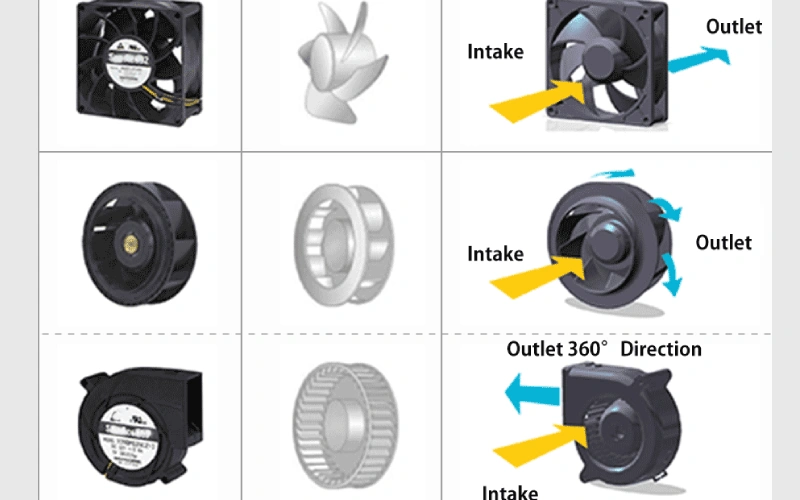
Axial Fan Basics
When you look at an axial fan, you’ll notice it moves air in a straight line, right through the fan from front to back. The blades spin around a central shaft, pulling air in and pushing it out in the same direction. This design makes the axial fan perfect for situations where you need to move a lot of air with very little resistance, like cooling a control cabinet or ventilating a room.
Modern axial fans use advanced blade shapes and lightweight materials to boost airflow and efficiency. Some even come with smart controls, so you can adjust the speed or monitor performance in real time. You’ll also find that these fans run quietly, especially at lower speeds. Linkwell’s experience in industrial ventilation means you get reliable, energy-efficient solutions for your electrical enclosures and cabinets.
Here’s a quick comparison to help you see how an axial fan works:
| Feature | Axial Fan |
|---|---|
| Airflow Direction | Air moves parallel to the axis of rotation (straight line) |
| Blade Design | Blades look like airplane wings, pushing air backward |
| Best Use | High-volume, low-pressure airflow |
Radial Fan Basics
A radial fan, sometimes called a centrifugal fan, works a bit differently. Instead of moving air straight through, it pulls air in at the center and flings it out at a right angle—like spinning water out of a bucket. This action creates higher pressure, which helps push air through filters, ducts, or other obstacles. If you need to move air in a tough environment with lots of resistance, a radial fan is your go-to choice.
Radial fans use rotating impellers to draw air in and then force it outward. This design lets them handle high-pressure jobs, such as in HVAC systems or industrial processes. You’ll often see these fans in places where airflow needs to overcome obstacles or travel long distances. Linkwell’s industrial ventilation expertise ensures you get a fan that stands up to demanding conditions and keeps your equipment safe.
Tip: If your application involves complex ductwork or high resistance, a radial fan will deliver the pressure you need.
Here’s a table to show the main differences between the two:
| Feature | Radial Fans | Axial Fans |
|---|---|---|
| Airflow Direction | Moves air radially outward from the center | Moves air parallel to the shaft |
| Pressure Generation | Best for high-pressure applications | Ideal for high-volume, low-pressure airflow |
| Efficiency | Less efficient in low-pressure applications | More efficient in low-pressure, high-flow scenarios |
| Noise Levels | Tends to be noisier at higher speeds | Usually quieter, especially at lower speeds |
| Installation & Maintenance | More complex | Easier to install and maintain |
Key Differences
Airflow Direction
When you compare the airflow direction of an axial fan and a radial fan, you’ll notice a big difference right away. An axial fan moves air in a straight line, pulling it in from one side and pushing it out the other. The air travels parallel to the shaft, which makes this type of fan perfect for moving large volumes of air with little resistance. You often see this in cooling systems for electrical enclosures or large rooms.
A radial fan, on the other hand, works differently. It draws air in at the center and then throws it out at a right angle, away from the shaft. This creates a radial airflow pattern. The air moves outward from the center, which helps the fan create higher static pressure. If you need to push air through filters, ducts, or around obstacles, a radial fan gives you the power you need.
| Feature | Axial Fan (Straight) | Radial Fan (Outward) |
|---|---|---|
| Airflow Direction | Parallel to shaft (front to back) | Perpendicular to shaft (center to side) |
| Best Use | Open spaces, direct cooling | Ducts, filters, high-resistance paths |
If you’re looking for a fan to cool a control cabinet, the Linkwell Electrical Enclosure Fan uses an axial design to deliver steady, straight airflow right where you need it.
Pressure Capability
Pressure capability is another key difference in the axial vs radial fan debate. Axial fans excel at moving lots of air, but they struggle when you add resistance, like filters or long ducts. They work best in open environments where air can flow freely.
Radial fans shine in high-resistance situations. They pull air in and then force it out with enough pressure to overcome obstacles. This makes them ideal for industrial settings with complex ductwork or heavy filtration.
| Type of Fan | Airflow Characteristics | Pressure Capabilities |
|---|---|---|
| Axial Fan | High-volume, low-pressure airflow | Limited static pressure |
| Radial Fan | Directional, high-pressure airflow | Handles significant resistance |
If your application involves pushing air through tight spaces or past barriers, a radial fan is the better choice. For simple cooling or ventilation, an axial fan gets the job done efficiently.
Efficiency
Efficiency matters when you want to save energy and keep costs down. Axial fans are known for their high efficiency in moving large amounts of air. Their design lets them use less power when there’s little resistance. This makes them a smart pick for cooling big spaces or ventilating enclosures.
Radial fans, while not as efficient in open spaces, are built for jobs that need high pressure. They use more energy to push air through filters or ducts, but they do it well. If you need to move air against resistance, the extra energy is worth it.
- Axial fans are more efficient for high-volume airflow, like cooling large rooms or electrical cabinets.
- Radial fans are better for high-pressure tasks, such as industrial ventilation with lots of obstacles.
- Axial fans usually have better energy efficiency because they don’t have to work as hard in low-pressure situations.
- Linkwell’s Electrical Enclosure Fan uses an energy-efficient axial design, helping you reduce operating costs while keeping your equipment cool.
Noise
Noise can be a big concern, especially in workspaces or areas where you need quiet operation. Axial fans tend to run quieter, especially at lower speeds. Their straight airflow and smooth blade design help keep noise levels down. In fact, many axial fans operate around 60 dBA, which is comfortable for most environments.
Radial fans, however, often make more noise. They spin faster and work harder to create pressure, which leads to higher sound levels. If you need a fan for a quiet office or sensitive equipment, an axial fan is usually the better option.
| Fan Type | Noise Level |
|---|---|
| Radial Fan | Generally noisier due to higher pressure work |
| Axial Fan | Tends to be quieter, especially at low speeds |
Tip: For quiet, energy-efficient cooling in electrical enclosures, choose a Linkwell Electrical Enclosure Fan with an axial design.
When you look at the advantages and disadvantages of each fan, think about what matters most for your application—airflow, pressure, efficiency, or noise. The right choice depends on your specific needs.
Application Guide
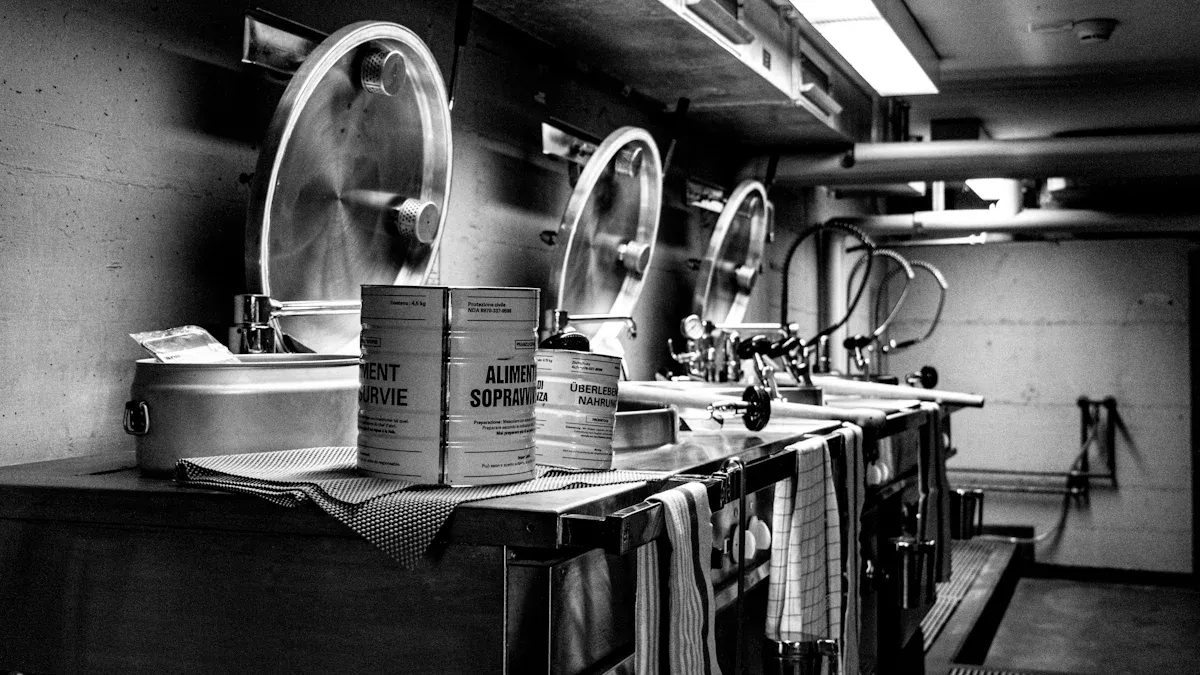
Axial Fan Application
When you need to move a lot of air with minimal resistance, an axial fan is your best friend. You see these fans everywhere because they handle general-purpose cooling and ventilation with ease. The blades spin and push air straight through, making them perfect for open spaces or areas where air needs to flow freely.
You’ll find axial fans in many commercial and industrial applications. For example, they keep factories and warehouses cool, help HVAC systems circulate air, and maintain indoor air quality in large buildings. If you manage a data center or electronics room, you probably rely on axial fans to keep equipment from overheating. These fans also work well in food processing, mining, and chemical plants, where steady airflow is key.
Here’s a quick look at where axial fans shine:
- HVAC systems for air circulation and temperature control
- Cooling large areas in factories, warehouses, and commercial buildings
- General building ventilation, both for supply and exhaust
- Electronics cooling in computer rooms and server racks
- Food and beverage processing for ventilation
Axial fans offer high efficiency when you need high-volume, low-pressure airflow. You get reliable performance and quiet operation, which makes them a popular choice for many environments.
| Industry | Application of Axial Fans |
|---|---|
| Food & Beverages | Cooling and ventilation in processing areas |
| Electronics | Cooling for computer rooms and electronic devices |
| Mining | Ventilation in mining operations |
| Chemicals | Cooling and air circulation in chemical processes |
| Aerospace | Airflow management in aerospace applications |
Tip: If your application involves open spaces or needs a lot of air movement, an axial fan delivers the airflow and efficiency you want.
Radial Fan Application
A radial fan, also called a centrifugal fan, steps in when your application demands higher pressure. These fans pull air in at the center and push it out at a right angle, creating focused airflow that can overcome resistance from filters, ducts, or dense equipment layouts. You’ll want a radial fan for tough jobs where air needs to travel through obstacles or long ductwork.
Radial fans are common in heavy-duty industrial ventilation. They handle high temperatures, dusty conditions, and even hazardous gases. You’ll see them in cement plants, steel mills, power stations, and chemical factories. These fans also play a big role in textile and glass industries, where they help with drying and cooling processes.
Check out some typical radial fan applications:
| Industry | Application Description |
|---|---|
| Cement Plants | Used in raw material preparation, material grinding, storage, blending, and waste gas removal. |
| Steel Plants | Integral for de-dusting, sintering, and can withstand high temperatures and dusty conditions. |
| Power Stations | Ensures smooth operation of boilers, suitable for high temperatures, commonly used below 500 MW. |
| Chemical Industry | Meets stringent safety requirements, used for exhausting hazardous gases. |
| Textile Industry | Employed for low-pressure drying processes. |
| Glass Industry | Used for cooling ovens and driving hot gases during glass preparation stages. |
Radial fans excel in applications where you need to push air through filters, ducts, or other barriers. They give you the pressure and performance needed for challenging environments.
Note: If your application involves complex ductwork or high-resistance paths, a radial fan is the right choice for reliable industrial ventilation.
Linkwell Electrical Enclosure Fan Uses
When you need to protect sensitive electronics and keep your equipment running smoothly, Linkwell Electrical Enclosure Fans offer a smart solution. These fans combine the best features of industrial fans with advanced controls and energy efficiency. You can use them in a wide range of applications, from industrial automation to telecom and renewable energy.
Here’s a table showing where Linkwell Electrical Enclosure Fans make a difference:
| Industry | Application Area | Use of Axial Fans | Relevance |
|---|---|---|---|
| Industrial Automation | Control Cabinets | Maintain stable internal temperature, protect PLCs | Prevent overheating of critical control components |
| Electrical Engineering | Electrical Enclosures | Cool circuit breakers, contactors, and relays | Ensure consistent electrical performance |
| Telecommunications | Telecom Signal Cabinets | Dissipate heat from routers, modems, fiber optics | Guarantee uninterrupted signal transmission |
| Renewable Energy | Inverter Cabinets for Solar/Wind Systems | Ventilate inverters, transformers, charge controllers | Improve system efficiency and lifespan |
| Transportation | Railway & Roadside Signal Boxes | Control ambient temperature for signaling electronics | Avoid communication delays and ensure passenger safety |
| Power Utilities | Electrical Substations & Switchgear | Provide airflow for transformers and control gear | Ensure energy reliability and reduce operational risks |
| Data Centers & IT | Network & Control Panels | Support ventilation for server racks and cabinets | Enhance data processing uptime |
| Medical Equipment | Control Cabinets in Imaging Tools | Maintain thermal stability for instruments | Ensure diagnostic accuracy and prevent device malfunction |
| Aerospace & Defense | Communication & Control Units | Provide airflow in radar and communication systems | Support mission-critical operations |
| Building Automation | HVAC Control Panels | Ventilate electrical drives and controllers | Improve energy efficiency and extend system life |
You can count on Linkwell fans for high energy efficiency, advanced controls, and reliable performance. They come with certifications like UL, CE, and ISO 9001, so you know you’re getting quality. You can mount them in different ways—top, side, or wall—depending on your cabinet design. These fans also support remote monitoring and customizable cooling capacities, making them a great fit for both industrial and telecom applications.
Callout: Linkwell Electrical Enclosure Fans help you maintain optimal cooling and airflow, protect your equipment, and boost the overall performance of your systems.
If you’re comparing axial vs radial fan options for your next project, think about your application suitability. Axial fans work best for high-volume, low-pressure cooling, while radial fans handle high-pressure, high-resistance environments. Linkwell gives you the flexibility to choose the right industrial fans for your needs, ensuring top-notch industrial ventilation and reliable performance every time.
Pros and Cons
Axial Fan Pros and Cons
When you look at the pros and cons of an axial fan, you’ll see why it’s such a popular choice for many ventilation needs. Let’s break it down:
Pros:
- Low power consumption helps you save on electricity bills over time. You get great efficiency, especially in open spaces.
- Compact design means you can fit these fans into tight spots. This is perfect if you have limited space in your cabinet or enclosure.
- Versatile installation options let you mount the fan in different ways. You can adjust the setup to match your specific application.
- Quiet operation makes it ideal for offices, control rooms, or any place where noise matters.
- High airflow capacity moves a lot of air quickly, keeping your equipment cool and safe.
Cons:
- Not the best choice for high-pressure situations. If you need to push air through long ducts or filters, you might want to consider another option.
If you want a reliable, energy-efficient solution, Linkwell’s axial fans stand out. They last longer, need less maintenance, and help you cut costs over the years.
Radial Fan Pros and Cons
Radial fans bring their own set of strengths and challenges. Here’s what you need to know:
| Pros | Cons |
|---|---|
| Handles high-pressure tasks | Tends to produce more noise due to turbulent airflow |
| Great for ductwork | Consumes more energy, which can raise operational costs |
| Moves air through obstacles | Not as efficient in open, low-resistance environments |
You’ll find that a radial fan works best when you need to move air through filters, ducts, or other barriers. It’s a solid pick for industrial spaces with lots of resistance.
Linkwell’s fans give you peace of mind. You only need to schedule maintenance once every 15,000 hours, and they can run up to 70,000 hours before you even think about replacing them. That means less downtime and more savings for you.
When you compare axial vs radial fan options, think about your airflow needs, efficiency goals, and the environment where you’ll use the fan. Linkwell offers solutions that deliver reliable performance and long-term value, no matter which type you choose.
Maintenance and Longevity
Axial Fan Maintenance
Taking care of your axial fan is simple if you stick to a regular schedule. You want your fan to run smoothly and last longer, so don’t skip these basic tasks. Here’s a quick table to help you remember what to check:
| Maintenance Task | Description |
|---|---|
| Cleaning | Wipe down blades and housing to remove dust and debris. This keeps airflow strong and steady. |
| Inspection | Look for signs of wear, damage, or imbalance. Catching problems early prevents bigger issues. |
| Lubrication | Add oil to bearings and motors as the manufacturer suggests. This reduces friction and noise. |
| Mechanical Checks | Check belts for wear and make sure they’re tight. Loose belts can cause the fan to fail early. |
| Electrical Maintenance | Watch for overheating, vibration, or strange noises from the motor. These can signal trouble. |
| Safety Precautions | Always follow safety rules when working on your fan. This keeps you and your equipment safe. |
If you follow these steps, your axial fan can last for years, often up to 50,000 hours with proper care.
Radial Fan Maintenance
A radial fan needs a bit more attention, especially in tough environments. You should clean the impeller and housing often, since dust and debris can build up quickly. Inspect all moving parts for wear or imbalance. Lubricate bearings and check the motor for any signs of overheating or vibration. If your fan uses belts, make sure they’re in good shape and properly tensioned. Regular checks help your radial fan handle high-pressure jobs without breaking down.
Linkwell Fan Reliability
When you choose a Linkwell Electrical Enclosure Fan, you get more than just cooling. These fans use ISO-certified materials and come with CE and ISO 9001 certifications. The weatherproof housing stands up to harsh conditions, so you don’t have to worry about dust or moisture. Linkwell fans meet UL, cUL, and international safety standards, giving you peace of mind in any industrial or telecom setting.
- Long-lasting operation, even in extreme environments
- Certified for safety and quality
- Designed for easy maintenance and quick installation
Tip: With Linkwell, you can expect your fan to deliver reliable performance and a long service life, helping you protect your equipment and reduce downtime.
Choosing between an axial or radial fan comes down to your airflow and pressure needs. You want to match the right fan to your application by checking airflow requirements, system resistance, and environmental conditions. Here’s a quick table to help you remember what matters:
| Factor | Why It’s Important |
|---|---|
| Fan Type | Matches your specific job |
| Airflow Requirements | Keeps your equipment cool |
| System Resistance | Ensures smooth operation |
| Environmental Factors | Handles heat, dust, or humidity |
Linkwell gives you expert advice, technical support, and custom solutions. You can always count on their team to help you pick the best fit for your project.
FAQ
What is the main difference between an axial and a radial fan?
You will notice that an axial fan moves air straight through, while a radial fan pushes air out to the sides. Axial fans work best for high airflow. Radial fans handle higher pressure.
How do I know which fan type fits my application?
Think about your airflow needs and any obstacles. If you need to move air freely, choose an axial fan. If you face filters or ducts, a radial fan works better.
Can I use Linkwell Electrical Enclosure Fans outdoors?
Yes, you can. Linkwell designs these fans with weatherproof housing. They work well in harsh environments and protect your equipment from dust and moisture.
How long do Linkwell fans usually last?
You can expect a long service life. With regular maintenance, Linkwell fans often run for 30,000 to 50,000 hours, keeping your systems cool and reliable.

